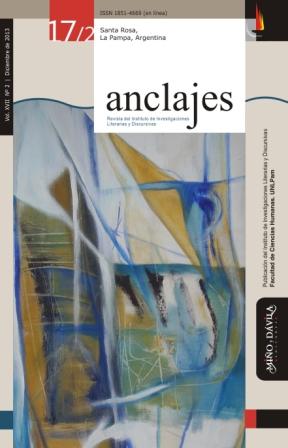The production of passion in the Enunciatee. About Julio Cortázar’s “No se culpe a nadie” (1956)
DOI:
https://doi.org/10.19137/http://dx.doi.org/10.19137/anclajes-2013-1724Keywords:
passion, enunciation, discursive strategies, Julio Cortázar, argentinean narrativeAbstract
Based on a reading of “No se culpe a nadie” (“Don’t Blame Any-one”) by Cortázar, we have analyzed some strategies used so as to put the passionate dimension into discourse at the enunciation level, taking into con-sideration the relationships between the subjects involved – enunciator and enunciatee – and a particular construction of the utterance as the object. Aspectualization and modal articulations affecting the initial reading con-tract, delaying its execution and generating renewed curiosity in the recep-tor’s simulacrum become pertinent in addressing the relationships between the subjects. Meanwhile, the utterance as the object that circulates is fi lled with meanings that increase the valence of the values assigned to it, cause concern, turn curiosity into expectation and establish suspense as delay, per-plexity and admiration before the text-producing agent’s competence.
Downloads
Downloads
Published
Issue
Section
License
Copyright (c) 2020 Danuta Teresa Mozejko

This work is licensed under a Creative Commons Attribution-NonCommercial-ShareAlike 4.0 International License.
The authors must adhere to the Creative Commons license called "Attribution - Non-Commercial - Share Alike CC BY-NC-SA", through which it is allowed to copy, reproduce, distribute, publicly communicate the work and generate derivative works, provided and when the original author is cited and acknowledged. However, it is not allowed to use the work or its possible derivative works for commercial purposes. The authors may establish additional agreements for the non-exclusive distribution of the version of the work published in the journal (for example, place it in an institutional repository or publish it in a book), with the acknowledgment of having been first published in this journal.
The publication of contents in this journal does not imply any royalty or charge for the contributors.












.png)

2.png)















_(2).png)






.jpg)
_(1)1.jpg)



.jpg)



